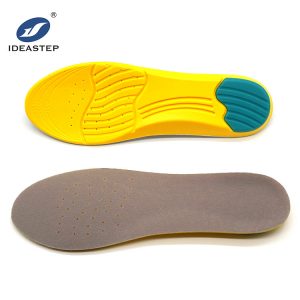
When it comes to breathability in insoles, there are several materials that are known for their ability to provide good airflow and moisture-wicking properties. Here are some of the materials commonly used for breathable insoles:
1. Leather: Genuine leather is a popular choice for insoles due to its natural breathability. It allows air to circulate, keeping your feet cool and dry. Leather also has moisture-wicking properties, helping to absorb sweat and prevent odors.
2. Cork: Cork is a lightweight and breathable material that provides excellent shock absorption and cushioning. It has natural antimicrobial properties, which help inhibit the growth of bacteria and reduce foot odor.
3. Mesh or Fabric: Insoles made from breathable mesh or fabric materials offer good airflow and ventilation. These materials allow heat and moisture to escape, keeping your feet dry and comfortable. They are often used in athletic or sports-oriented insoles.
4. Poron: Poron is an open-cell foam material known for its breathability and moisture-wicking capabilities. It absorbs and dissipates moisture, allowing your feet to stay cool and dry. Poron insoles are commonly used in athletic footwear.
5. EVA (Ethylene-vinyl acetate): EVA is a lightweight foam material that offers good breathability. It has open-cell structures that enable air circulation, preventing heat buildup and allowing moisture to evaporate. EVA is commonly used in many types of insoles, including those for athletic shoes.
It’s worth noting that the breathability of insoles can also depend on the design and construction of the shoe they are placed in. Proper ventilation features in the shoe, such as perforations or mesh panels, can enhance the overall breathability and effectiveness of the insoles.
Related product links: https://www.aideastep.com/product/pu-insoles-shock-absorber-breathable/.
